Keeping the home clean and organized can be both challenging and overwhelming. One of the easiest ways to tackle a house cleaning mission is to maintain a proper schedule. Everything in the home requires a different level of cleaning. A few things may require regular cleaning, while some items can go without cleaning for weeks. It is great to break down all cleaning works into manageable daily, weekly, and monthly tasks.
A cleaning schedule remains the ultimate trick to maintaining a healthier home. The plan helps achieve the perfect balance, investing all efforts in the right place. It also ensures that areas that can easily capture dust, allergens, and bacteria are clean.
Here is Luxe Design Center’s daily, weekly, and monthly cleaning schedule with some quick tips and tricks to tackle all cleaning chores.
Daily Tasks
Making the Bed
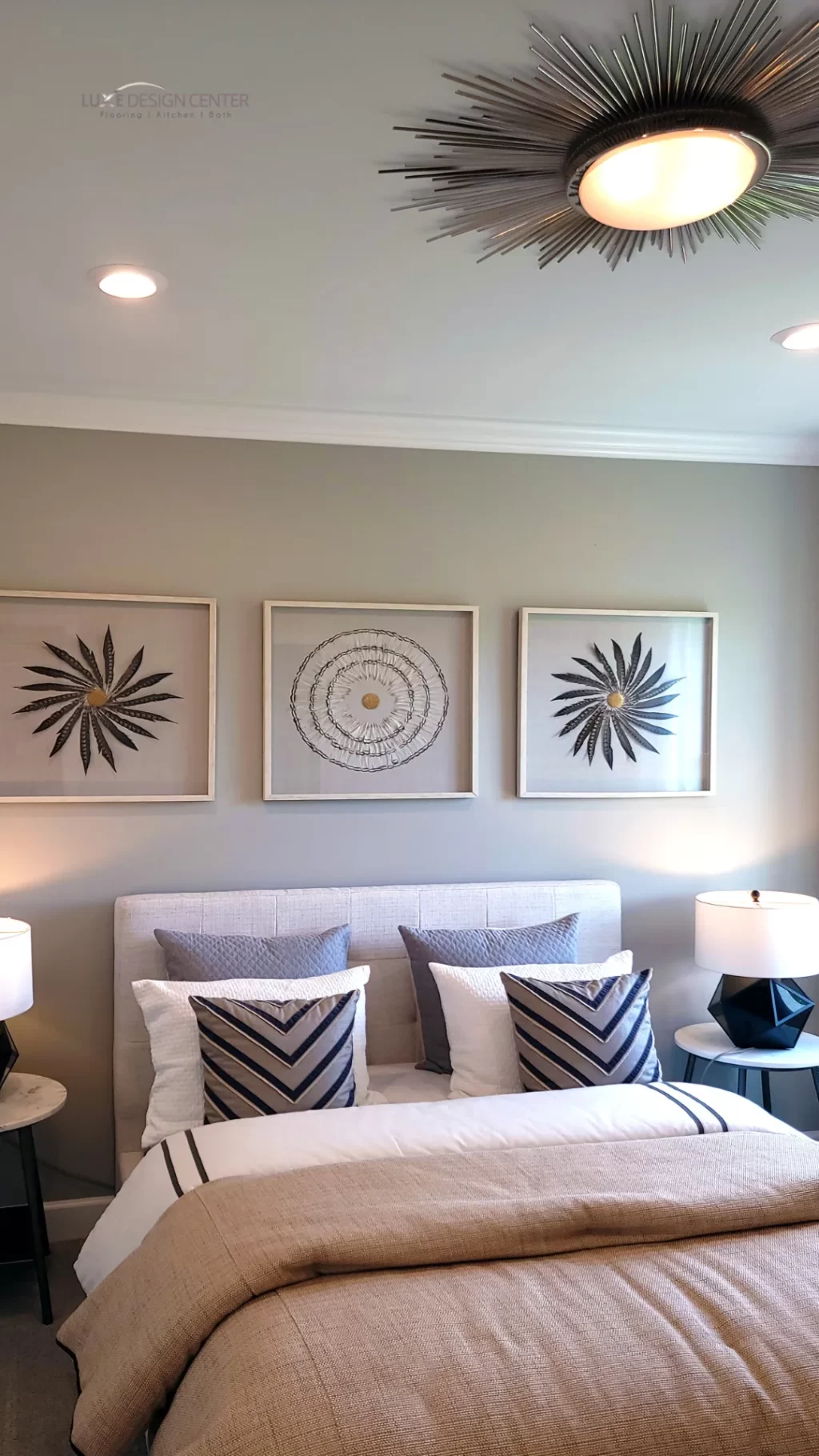
One of the best practices remains to make the bed every morning. A little effort into making the bed can make the bedroom look a lot tidier and further encourages keeping it clean throughout the day.
Tidying up the Space

Another important practice remains to tidy up rooms in daily use, including everyday messes, trash, and things out of place. Remove all the garbage and put the rest of the items in their rightful place. Trays, baskets, and boxes are a great investment for organizing knick-knacks and minimizing clutter. Also, tidying up rooms every day is a great way to make daily and weekly clean-up a breeze. A few minutes of decluttering and organizing can drive your home to maintain order.
Doing the Dishes

Dirty dishes overnight can attract germs, bacteria, and a bad smell. Wash the dishes or load the dishwasher before bed to avoid the problem. It is also good to put away all dishes to start fresh the next morning.
Cleaning up the Kitchen Counters

Cleaning the kitchen counter is essential for maintaining health. A dirty kitchen counter is easily prone to the growth of bacteria. Clean it every day to maintain hygiene and prevent your countertop from staining and damage. Use a paper towel, microfiber cloth, or disinfecting wipes to clean the entire countertop. Use soap and water in case there is a mess or spill. Make sure to dry the countertop once cleaned thoroughly.
Sweeping the Floors
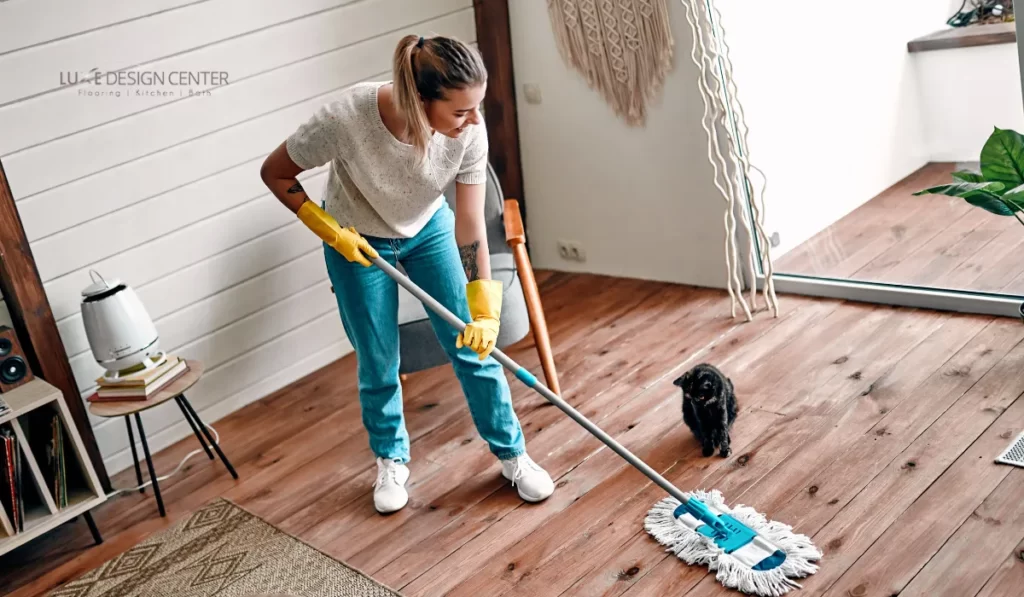
It is a good practice to sweep floors every day. It is essential in kitchens, where the mess from food can allow pests and germs to accumulate. The kitchen and rooms frequently require daily sweeping, especially if kids and pets are home. For rarely used areas, cleaning twice or thrice a week is adequate to remove dust and dirt that accumulates on the floor. Hardwood or vinyl floors are generally quite easy to maintain; a soft broom or dry mop can keep floors looking new.
Weekly Tasks
Deep Cleaning the Bathroom

Deep cleaning the bathroom once or twice a week is crucial for maintaining hygiene. Deep cleaning involves washing all areas of the bathroom. Apply an all-purpose cleaner to the toilet bowl, shower, bathtub, and sink. In more dirty areas of the bathroom, use bleach or other disinfectants and let the cleaner soak for at least 10 to 15 minutes to loosen up the dirt and build-up, making it easier to scrub.
Make sure to wipe clean toilet paper holders, towel racks, and faucets to germ-free the bathroom. For countertops and outer areas of the toilet, use disinfectant wipes to clean, using a separate one for each. Consider using a damp microfiber cloth and glass cleaner for cleaning the bathroom mirror. Lastly, sweep and mop the floor starting from the furthest side of the door. Use soapy bleach water to clean the floor thoroughly. Rinse it with water to remove any slippery soap residue, and dry the floor and surfaces once done.
Checking the Refrigerator for Expired Food
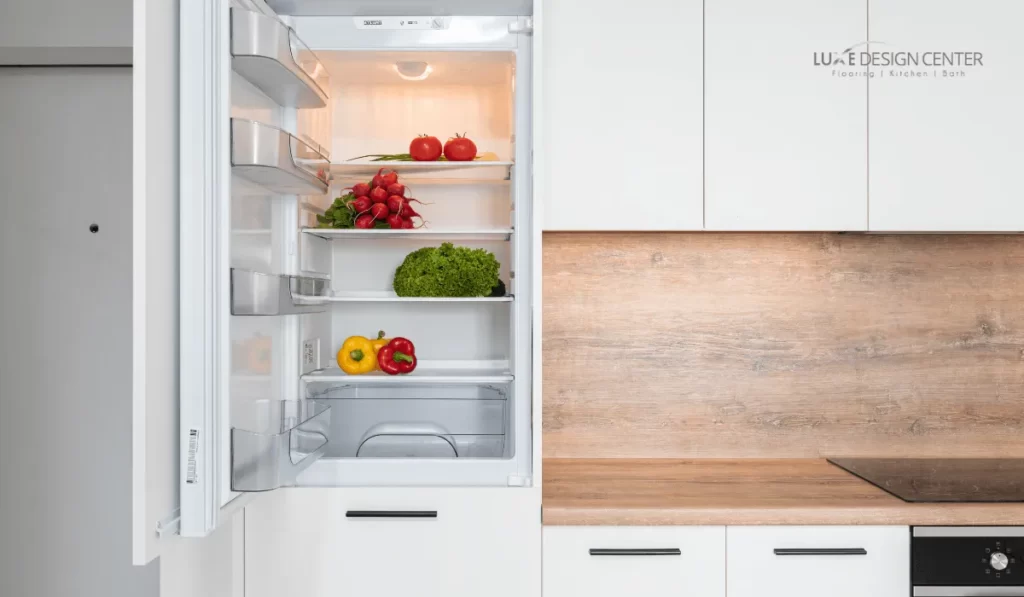
Expired food and products can easily pile up in the fridge. It is a great idea to select at least one day each week to discard all these expired items.
Change Bedding

Changing bedding weekly is crucial for reducing allergens in the room. Bed sheets often collect skin flakes that can attract dust mites upon the bed. Make sure to clean bed linens at least once a week with hot water.
Laundry

Setting aside one day weekly for laundry is one of the most successful cleaning methods. In addition to cleaning clothing, washing household linens, towels, beddings, and bathmats in hot water is also essential for preventing dust and allergens from accumulating in the home.
Declutter and Clean Spaces
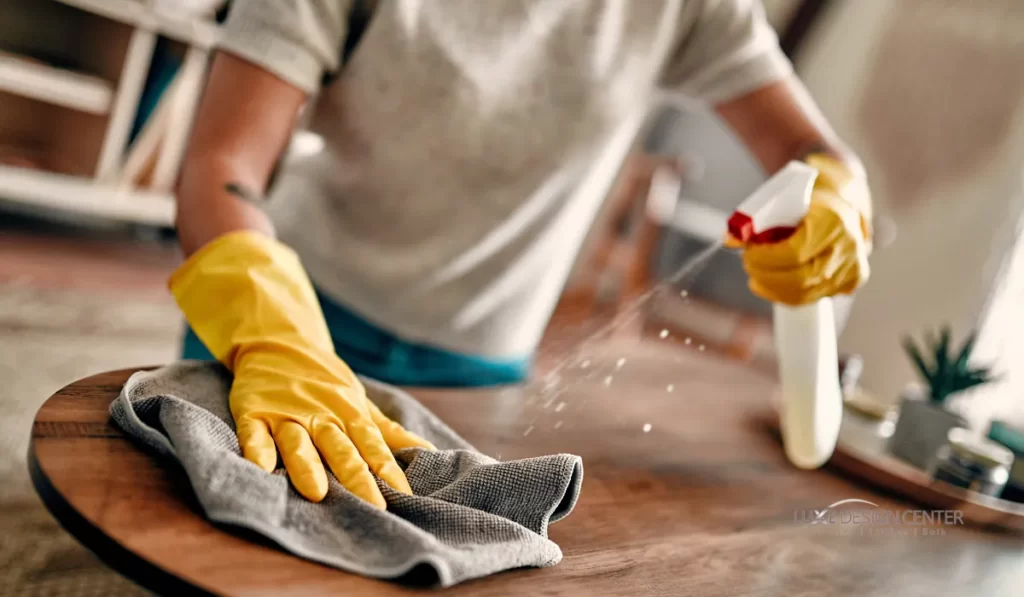
Decluttering hard surfaces is an essential part of organizing the home. Desks, consoles, nightstands, coffee, and side tables naturally become the drop-off points. It is a great idea to declutter and clean these surfaces weekly. Take a few minutes to place things back in their designated place, throw away things that are not required after dusting and wiping off the surfaces, and clean every item placed upon it. This simple task can make the room feel much more organized and open.
Vacuum Carpets and Rugs

Carpets and rugs can easily trap dust and allergens in their fibers, and these allergens can spread throughout the room. Keep the home free from allergens by cleaning rugs and carpets weekly. Large carpets should be vacuumed, while small rugs and mats are typically hand-washed.
Mop Floors
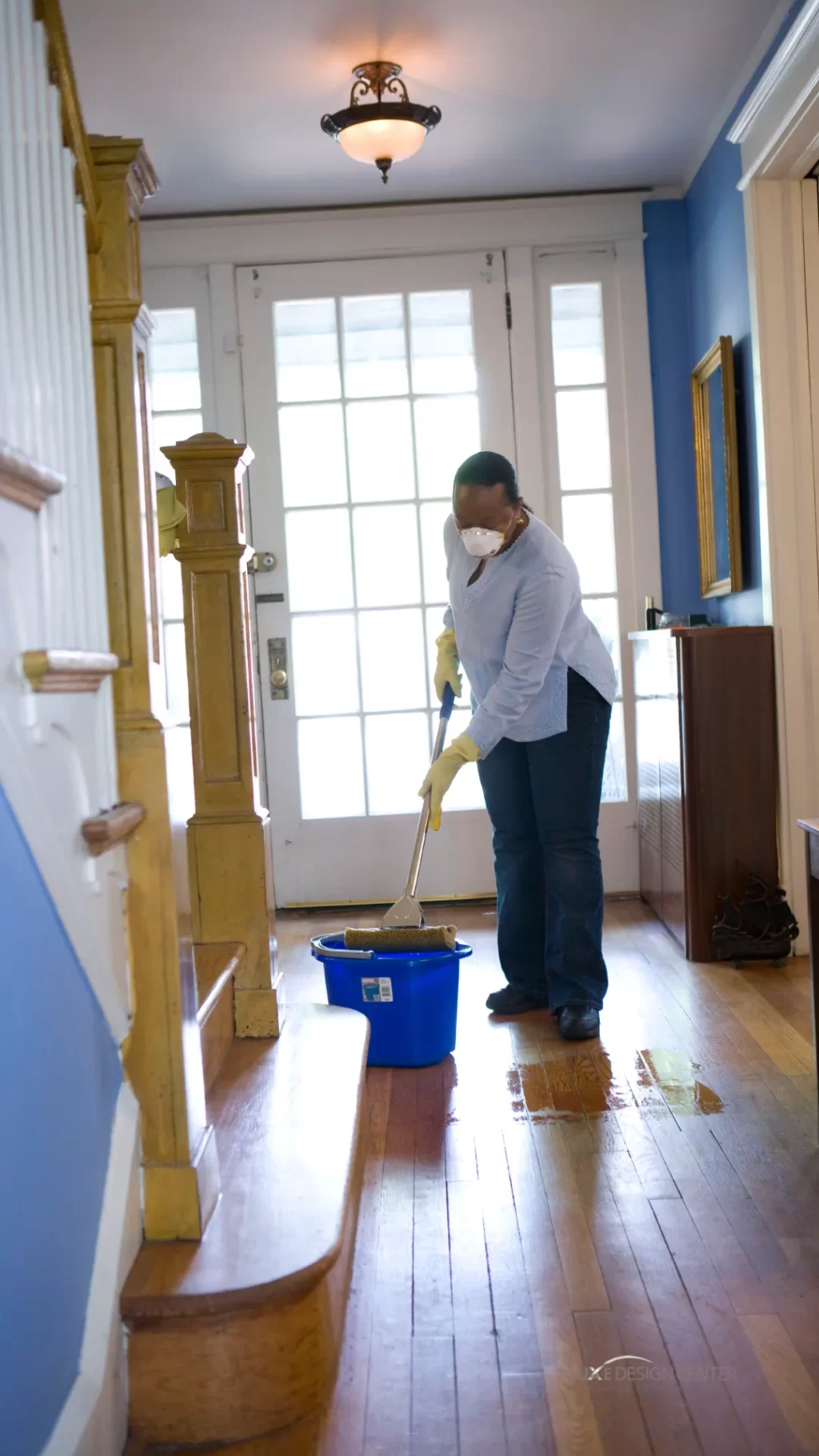
Mopping floors weekly is essential to preventing dust and allergens from accumulating, especially in high-trafficked home areas, such as the entryway, kitchen, and bathrooms. Before mopping the floor, thoroughly sweep or vacuum to remove large particles. Fill a bucket with warm water and a small floor cleaner for cleaning. Immerse the mop in the bucket and wring it out until it is damp. It is important to start from the far corner of the room, moving back towards the exit. For a dirtier area, mop the floor at least twice. Once done, mop the floor using clean water. This step is essential to remove any sticky soap residue left behind. For vinyl flooring, avoid harsh detergents and abrasive tools.
Monthly Tasks
Declutter Storage Units

There is nothing more stressful and frustrating than a cluttered storage unit. Besides being unpleasant to the eye, disorganized storage implies spending hours finding a needed item. From wardrobe to kitchen cabinets, shelves, and drawers allot one day each month for organizing each storage unit. One of the simplest ways to declutter any space is to sort out the items into three boxes. First, take out all the things to keep. Second, put aside things that need to be thrown away or recycled. Lastly, sort out something to give away. Simple sorting can help to declutter the space more productively.
Dust Ceiling Fans, Light Fixtures, and Baseboards
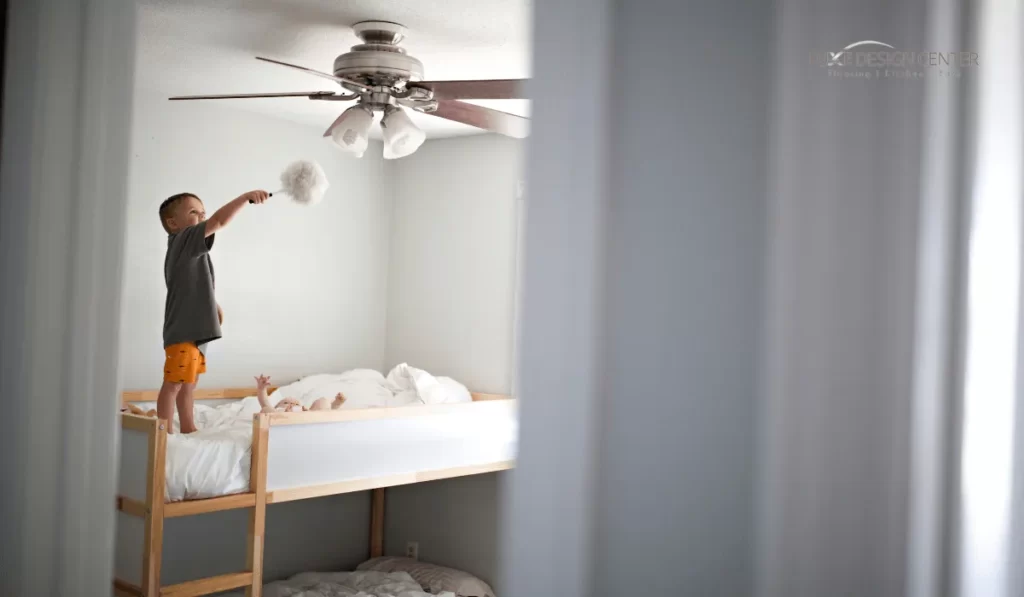
To clear the air from dust and allergens, deep cleaning each room at least once per month is necessary, including dusting and cleaning light fixtures, ceiling fans, window treatments, and baseboards. Start by dusting from top to bottom. Clear space from allergens, clean any dust or webs accumulated upon the wall, especially towards the corners. It is equally important to dust ceiling fans, light fixtures, and window treatments. Make sure to clean the edges of the baseboards thoroughly.
Dust-Off and Wipe Furniture
Furniture has many nooks and corners where dust and allergens can easily accumulate. Use a damp cloth to dust and wipe the front, back, and sides of the furniture. Spaces underneath a dresser, bed, sofa, or table can easily become home to dust bunnies. It is important to clear underneath the furniture at least once or twice each month. Another crucial step for cleaning furniture is to vacuum upholstery and pillows. Monthly dusting and cleaning of furniture can significantly reduce dust and allergens in the home.
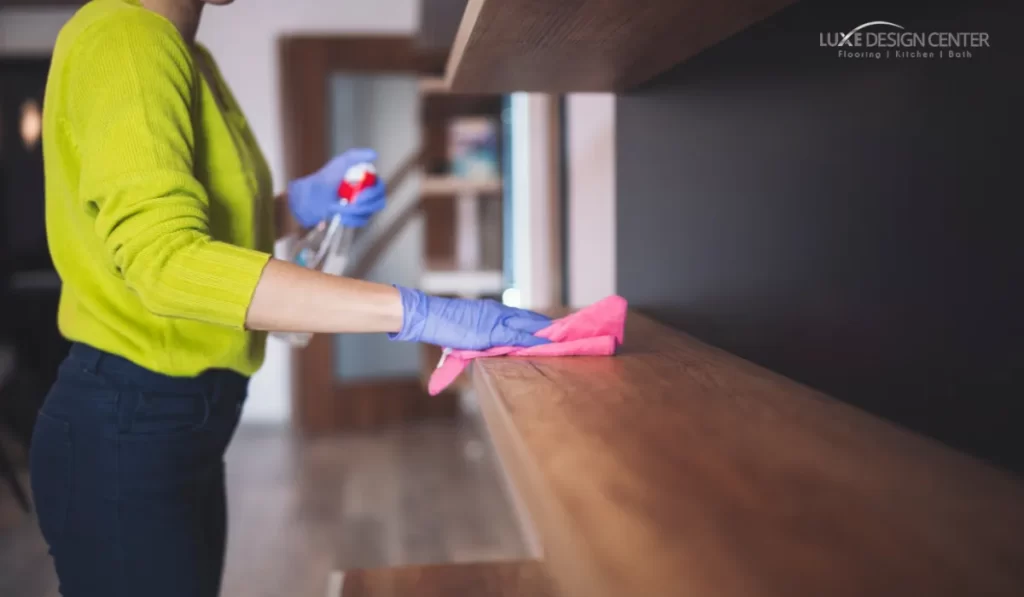
Clean All Household Appliances

Appliances are used almost every day and can easily gather grime and bacteria. It is advisable to clean your appliances monthly. Deep clean dishwashers at least once a month with vinegar and baking soda for sufficient cleaning. Deep clean washing machines at least once a month to remove soil and bacteria that can pile up. Add a little chlorine bleach to the dishwasher and run a hot water cycle every month. Refrigerators should get a deep clean at least once every three months. Mix a little dishwashing liquid in hot water for the fridge’s interior and use a sponge or microfiber cloth to wipe clean the refrigerator. Take out all the bins and shelves and wash them separately before putting things back.
Clean Window Treatments
Window treatments also trap all kinds of dust and allergens, and to avoid the problem, clean window treatments monthly. Consider washing curtains at least once every four months. Blinds and shutters may require a soapy scrub once every month.

Wash Duvets, Comforters, and Pillows
Even when protected with a cover, duvets, comforters, and pillows can gather bacteria over time. It is advisable to wash them at least once every 3 to 4 months.
Luxe Design Center recommends daily, weekly, and monthly tasks as the basic guidelines for keeping the home clean. However, the schedule may differ for every household. More frequent cleaning may be necessary if you have kids or a pet. Try to deal with any spills and messes right away to avoid problems later. If an area needs immediate attention, consider cleaning that area first.
For monthly tasks, clean room by room. Always start with dusting the light fixtures, walls, and window treatments. Next, clean all furniture and hard surfaces. The last step requires sweeping and mopping the floor. Tweak this basic schedule according to feasibility and requirements. A cleaning schedule that is practical and manageable can go a long way in keeping your house clean and maintaining the health of loved ones.
